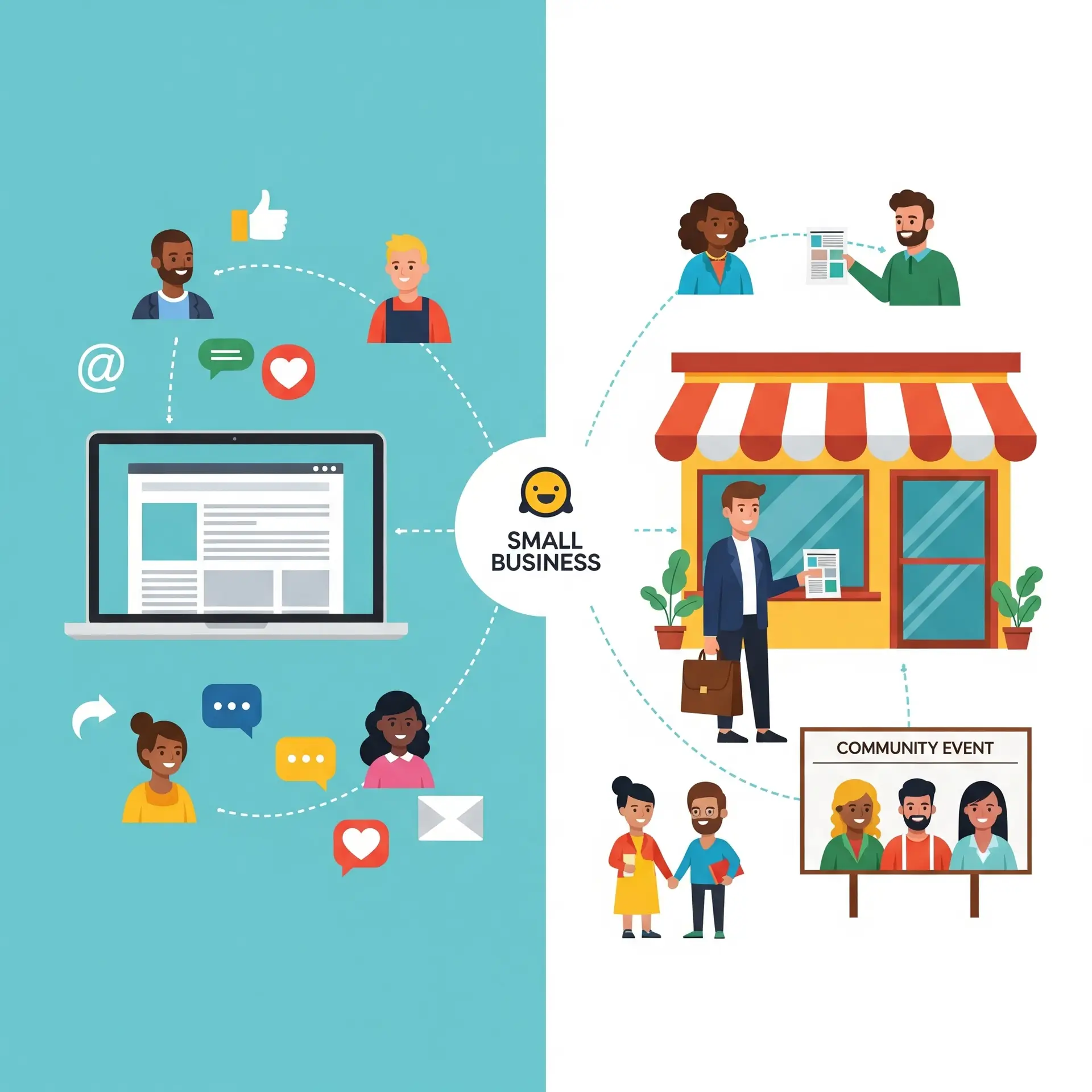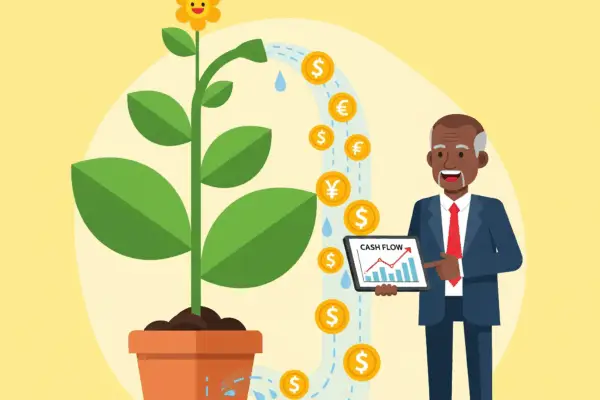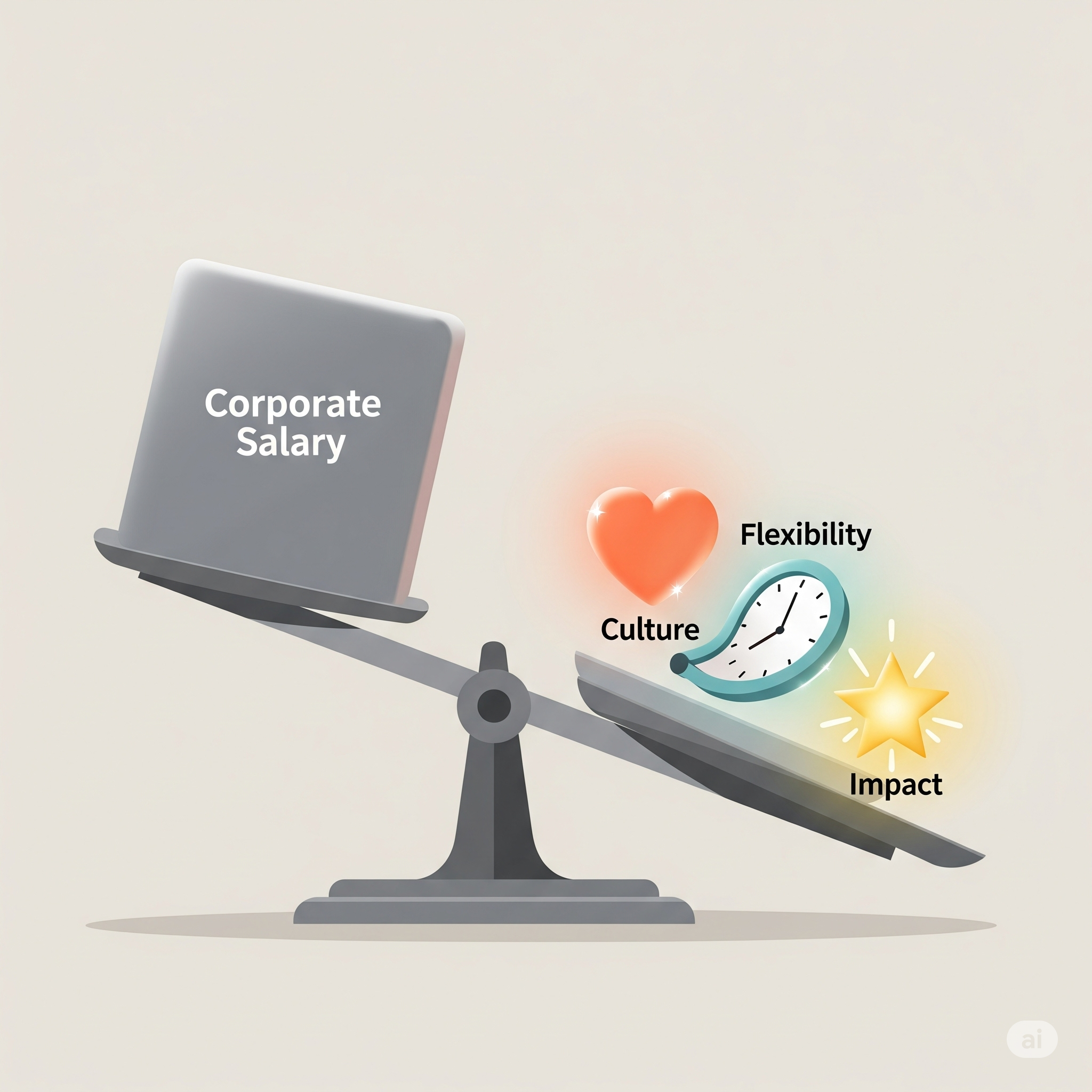Ah, the modern marketplace. Isn’t it a magnificent, swirling kaleidoscope of opportunity and, let’s be honest, a fair bit of head-scratching? As a small business owner, you’re not just selling products or services; you’re orchestrating a symphony of customer interactions that can begin with a tap on a screen and end with a handshake across a counter, or vice versa. The game has changed, my friends, and the old playbooks? Well, they’re gathering dust on the shelf, charming as they may be.
We live in a world where the customer isn’t just “online” or “offline.” They are, for lack of a better term, “omnichannel creatures.” They browse your Instagram feed while waiting for their coffee, then pop into your store on their lunch break. They read glowing reviews on Yelp before calling you to book an appointment. They might discover you through a local community event, then sign up for your newsletter and become a loyal online patron. This fluidity, this seamless dance between the digital and the physical, is what we’re calling the “digital divide” – not a chasm to be feared, but a bridge to be built. And today, we’re going to lay the bricks together.
For too long, the narrative has been that small businesses must choose: are you an online enterprise, or a brick-and-mortar stalwart? This binary thinking is not just outdated; it’s detrimental. The truth is, the most successful small businesses of tomorrow (and indeed, many today) are those that have mastered the art of marketing to both online and offline customers, not as separate entities, but as parts of a unified, holistic strategy. They understand that a customer’s journey is rarely linear, often crisscrossing between your website, your social media, your physical location, and your community presence. Ignoring one facet means leaving money on the table and, more importantly, leaving potential loyal customers out in the cold.
This isn’t about throwing every marketing dollar at every possible channel. That’s a recipe for burnout and an empty bank account. Instead, it’s about strategic integration, understanding where your unique customers are, and creating compelling experiences that resonate regardless of the touchpoint. It’s about leveraging the unique strengths of the digital realm for reach and scalability, while simultaneously harnessing the power of the physical world for connection and trust.
So, buckle up, my entrepreneurial adventurers. Over the next several thousand words, we’re going to embark on a comprehensive journey. We’ll dissect the modern customer, explore the most potent online strategies, delve into the timeless wisdom of offline engagement, and most critically, learn how to weave these threads into a single, unbreakable tapestry. This isn’t just theory; this is actionable insight designed to help your small business not just survive, but truly thrive in this beautifully complex, hybrid marketplace. Let’s build that bridge.
Understanding Your Hybrid Customer: The Core of Your Strategy
Before we dive into the tactics, let’s take a moment to truly understand the individual you’re trying to reach. The modern consumer defies easy categorization. They are not merely digital natives or traditionalists; they are chameleons, adapting their behavior based on convenience, urgency, and personal preference.
Think about it. How many times have you “researched online, purchased offline” (ROPO) for a major item like a television or even a new pair of shoes? You pore over specifications, read reviews, compare prices online, and then you step into a physical store to see, touch, and finally buy. Conversely, how often do you “showroom” – browsing items in a physical store, perhaps even trying them on, only to then purchase them online later, often for a better price or greater convenience? This dynamic interplay is the new normal.
Your customers might discover you through a local flyer, then check out your website for more details. They might see an ad on social media, then physically visit your store. They might even call your business after a Google search, having decided that a human conversation is the best way to get their specific questions answered. The key takeaway here is that their journey is fragmented, yet their expectation is seamlessness. They want to move effortlessly between channels, and they expect you to be present and consistent at every single point of interaction.
To effectively market to this hybrid customer, you need to gather data from all fronts. What are your customers searching for online? What are their demographics? What social platforms do they frequent? Crucially, what are they saying in your physical store? What questions are they asking? What feedback are they giving? How do they prefer to pay? Marrying this data will give you a remarkably rich picture of your customer, allowing you to tailor your messages and experiences with pinpoint accuracy, regardless of whether they are interacting with your digital storefront or your physical one. The goal isn’t just to sell; it’s to build a relationship that transcends any single channel.
Building Your Online Fortress: Digital Marketing Strategies
Your online presence is often the first impression a potential customer has of your business, even if their ultimate interaction is offline. It’s your digital storefront, your 24/7 customer service representative, and your global billboard. Building a robust online fortress requires a multi-pronged approach, each element reinforcing the others.
The Website as Your Digital Hub
Your website isn’t just a brochure; it’s the central nervous system of your online operation.
* Mobile-First Design: This is no longer optional; it’s absolutely essential. The vast majority of internet traffic now comes from mobile devices. Your website must load quickly, be easy to navigate on a small screen, and offer a flawless user experience. If it doesn’t, visitors will bounce before they even see what you offer.
* User Experience (UX) and Conversion Rate Optimization (CRO): Is your website intuitive? Can visitors easily find what they’re looking for? Are your calls to action clear and compelling? Every click, every scroll, every form fill should be frictionless. Optimize for conversions, whether that’s a sale, a contact form submission, a newsletter signup, or a phone call.
* E-commerce Functionality: Even if your primary business is offline, consider offering at least a selection of your products or services online. This caters to the customer who prefers the convenience of online shopping and can significantly expand your reach.
* Clear Calls to Action (CTAs): Tell people what you want them to do. “Shop Now,” “Contact Us,” “Book an Appointment,” “Get a Quote,” “Visit Our Store.” Make these prominent and easy to find.
Search Engine Optimization (SEO)
SEO is about making sure your business shows up when people search for what you offer. For small businesses, local SEO is paramount.
* Local SEO: This is your bread and butter. Claim and optimize your Google My Business profile with accurate information, photos, business hours, and services. Encourage reviews. Ensure your name, address, and phone number (NAP) are consistent across all online directories (citations). This helps you rank for “near me” searches.
* Keyword Research: Understand what terms your ideal customers are typing into search engines. Use tools to find relevant long-tail keywords (e.g., “best handmade artisanal coffee beans in Brooklyn” instead of just “coffee”). Focus on keywords that indicate purchase intent.
* On-Page and Off-Page SEO: Ensure your website content uses relevant keywords naturally. Create high-quality, informative content (on-page). Build reputable backlinks from other websites to yours (off-page) to signal authority to search engines.
* Content Marketing: A blog on your website is an SEO powerhouse. Provide value, answer common customer questions, and demonstrate your expertise. This not only attracts search traffic but also positions you as a trusted resource.
Social Media Marketing
Social media is where your customers connect, discover, and often make purchasing decisions.
* Choosing the Right Platforms: Don’t try to be everywhere. Identify where your ideal customers spend their time. Is it Facebook for an older demographic, Instagram for visual products, LinkedIn for B2B, or TikTok for a younger, trend-focused audience?
* Content Strategy: Post consistently and diversely. Share behind-the-scenes glimpses, customer testimonials, product showcases, helpful tips, and engaging questions. Use high-quality visuals and video.
* Community Building: Engage with your followers. Respond to comments and messages. Run polls and ask questions. Social media is a two-way street; foster a sense of community around your brand.
* Paid Social Advertising: Social media platforms offer incredibly precise targeting options. You can target based on demographics, interests, behaviors, and even location. Use paid ads to reach new audiences, promote specific products, or drive traffic to your website or physical store.
Email Marketing
Email remains one of the most powerful and cost-effective digital marketing tools, offering a direct line of communication to your customers.
* List Building Strategies: Offer incentives for signing up for your email list – a discount, exclusive content, early access to sales. Make it easy to sign up on your website, in your physical store (e.g., a tablet at the checkout), and at events.
* Segmentation: Don’t send the same email to everyone. Segment your list based on purchase history, interests, location, or how they signed up. This allows for highly personalized and relevant messages.
* Personalization: Use the customer’s name. Refer to their past purchases. Tailor content based on their preferences. Personalized emails have significantly higher open and click-through rates.
* Automated Sequences: Set up automated email series for new subscribers (welcome series), abandoned carts, birthday greetings, or post-purchase follow-ups. These work 24/7 to nurture leads and build loyalty.
* Measuring Effectiveness: Track open rates, click-through rates, and conversion rates. A/B test subject lines, calls to action, and content to continuously improve your campaigns.
Paid Digital Advertising (PPC)
Paid ads offer immediate visibility and highly targeted reach.
* Google Ads: Run search campaigns to appear at the top of Google results for specific keywords. Use display ads to reach people on websites across the internet. Explore Local Service Ads if applicable to your business.
* Social Media Ads: As mentioned earlier, Facebook, Instagram, LinkedIn, and TikTok offer powerful advertising platforms. Use them for lead generation, brand awareness, or direct sales.
* Retargeting: Show ads to people who have previously visited your website or interacted with your social media. This is highly effective as they are already familiar with your brand.
* Budgeting and A/B Testing: Start with a modest budget and test different ad creatives, headlines, and targeting options to see what performs best. Don’t be afraid to experiment.
Online Reputation Management
In the digital age, your reputation precedes you.
* Review Platforms: Actively monitor and manage your presence on platforms like Google Reviews, Yelp, TripAdvisor, and industry-specific review sites.
* Responding to Reviews: Respond to ALL reviews, positive and negative. Thank positive reviewers. For negative reviews, apologize, empathize, and offer a solution. This shows you care and are committed to customer satisfaction.
* Encouraging Feedback: Make it easy and appealing for satisfied customers to leave reviews. Provide direct links or QR codes that lead directly to your review pages.
Mastering the Tangible World: Offline Marketing Strategies
While digital presence is crucial, the physical world offers unparalleled opportunities for building deep connections and fostering local loyalty. These strategies are often about hands-on interaction, community involvement, and the power of human connection.
Local Community Engagement
Being an active part of your local community builds goodwill and positions your business as a valuable local asset.
* Sponsorships: Sponsor local sports teams, school events, charity runs, or community festivals. Your logo on a banner or a team jersey provides visibility and demonstrates your commitment to the community.
* Partnerships with Complementary Local Businesses: Team up with non-competing businesses. A coffee shop could partner with a bookstore for a “book club discount.” A boutique might collaborate with a local salon for a “pamper package.” Cross-promotion expands your reach to new audiences.
* Participating in Local Fairs, Markets, and Festivals: Set up a booth. Offer samples, demonstrations, or exclusive event discounts. These are excellent opportunities for direct customer interaction and lead generation.
* Running Local Workshops or Classes: If you’re a bakery, offer a bread-making class. If you’re a tech repair shop, offer a “smartphone basics” workshop for seniors. This positions you as an expert and attracts new customers interested in learning from you.
In-Store Experience (if applicable)
For businesses with a physical storefront, the in-store experience is a critical marketing tool in itself.
* Ambiance, Layout, Product Display: Make your store inviting, easy to navigate, and visually appealing. Think about lighting, music, scents, and how products are presented. A delightful environment encourages longer visits and more purchases.
* Exceptional Customer Service: This is your secret weapon offline. Friendly, knowledgeable, and genuinely helpful staff can turn a one-time visitor into a lifelong advocate. Go above and beyond. Remember names. Offer personalized recommendations.
* Loyalty Programs: Encourage repeat business with a punch card, points system, or exclusive discounts for loyal customers. This fosters a sense of appreciation and belonging.
* In-Store Events and Promotions: Host trunk shows, author signings, tasting events, or holiday sales. These create buzz, drive foot traffic, and offer unique experiences that online shopping can’t replicate.
Traditional Advertising (Strategic Use)
While often overshadowed by digital, traditional advertising still holds sway, especially for local targeting.
* Local Print Ads: Community newspapers, local magazines, and neighborhood newsletters often have highly engaged readerships. A well-placed ad can reach a specific local demographic.
* Radio Ads: Local radio stations can be surprisingly effective for reaching commuters or specific listener demographics. Target specific shows or times that align with your audience.
* Direct Mail: Postcards or flyers delivered to specific zip codes or neighborhoods can be incredibly effective for localized promotions, especially if they offer an irresistible offer or a clear call to action.
* Outdoor Advertising: Billboards, bus shelter ads, or signage in high-traffic areas can build local brand awareness and direct foot traffic to your physical location.
Networking and Referrals
Personal connections and word-of-mouth remain powerful drivers of business.
* Business Associations: Join your local Chamber of Commerce, BNI groups, or industry-specific associations. Networking with other local business owners can lead to valuable partnerships and referrals.
* Word-of-Mouth Marketing: Encourage satisfied customers to spread the word. Provide excellent service, and they’ll do it naturally. You can also actively ask for referrals.
* Referral Programs: Offer incentives to existing customers who bring in new business. This can be a discount, a free product, or a small cash bonus.
Public Relations (Local Focus)
Getting your business featured in local media can significantly boost credibility and reach.
* Pitching Local News Outlets: Have a unique story? A significant milestone? A charitable initiative? Reach out to local newspapers, TV stations, or online news blogs. They are often looking for local interest stories.
* Press Releases: For significant events, new product launches, or major achievements, issue a well-crafted press release to local media contacts.
Bridging the Gap: Integrating Online and Offline Efforts
This is where the magic truly happens. It’s not enough to just have an online strategy and an offline strategy. The true power lies in making them work together, creating a seamless, interconnected customer journey. This integration is the hallmark of a truly modern, effective marketing approach.
Seamless Customer Journey
Your goal is to make it effortless for customers to move between your digital and physical worlds.
* Online Research Leading to In-Store Visits: Ensure your website prominently displays your physical address, phone number, and opening hours. Use local SEO to make sure you appear in “near me” searches. Highlight unique in-store experiences or exclusive promotions that might tempt an online browser to visit.
* In-Store Purchases Leading to Online Engagement: After an in-store purchase, encourage customers to follow you on social media, sign up for your email list, or leave a review online. Provide a QR code on receipts or signage.
* Click-and-Collect / Buy Online, Pick Up In Store (BOPIS): This is a powerful hybrid model. Customers enjoy the convenience of online shopping (browsing, comparing prices, ordering from home) combined with the immediacy of picking up their item locally, avoiding shipping fees and delays.
* QR Codes in Physical Spaces: Place QR codes on product tags, flyers, menus, or window decals that link directly to product pages, your social media profiles, an online booking system, or a special online-only discount.
* Digital Signage in Physical Stores: Use screens in your store to promote your website, social media channels, upcoming online sales, or interactive content.
* Integrated Loyalty Programs: Make your loyalty program work both online and offline. Points earned in-store should be redeemable online, and vice versa. This encourages repeat business across all channels.
Data Integration
The insights gleaned from both your online and offline interactions are infinitely more powerful when combined.
* CRM Systems: Implement a Customer Relationship Management (CRM) system that can track customer interactions across all touchpoints. This allows you to see a complete view of their history, preferences, and purchases, regardless of whether they engaged digitally or physically.
* Using Online Data to Inform Offline Promotions: If your online data shows a particular product is trending or a certain demographic is highly engaged, use this insight to create targeted in-store displays or promotions.
* Using Offline Data to Inform Online Campaigns: If you notice a high volume of a particular question being asked in-store, create an FAQ section on your website or a series of social media posts addressing it. Use in-store purchase data to personalize online email campaigns or retargeting ads.
* Tracking ROPO and Showrooming: While challenging, try to implement systems to track these behaviors. Surveys at checkout (online or offline), unique discount codes for specific channels, or asking “how did you hear about us?” can provide valuable insights.
Unified Branding and Messaging
Consistency builds trust and recognition.
* Consistency Across All Touchpoints: Your logo, brand colors, typography, tone of voice, and core messaging should be identical whether a customer encounters you online, in your physical store, or through a traditional ad. This creates a cohesive and professional image.
* A Cohesive Narrative: Ensure your brand story and values are communicated clearly and consistently across all channels. What do you stand for? What problem do you solve? This unified narrative resonates deeply with customers.
Personalization Across Channels
Leverage your integrated data to offer highly personalized experiences.
* Online Browsing History for In-Store Recommendations: Imagine a customer browsing specific product categories on your website. When they visit your store, a sales associate, armed with this data (via your CRM), can offer tailored recommendations.
* In-Store Purchase History for Online Retargeting: If a customer bought a certain item in your store, you can then retarget them online with complementary products, accessories, or follow-up service reminders.
* Cross-Channel Customer Service: Allow customers to start a conversation online (e.g., chat bot), then continue it with a phone call or in-person visit without having to repeat all their information. This fluid handoff is critical for customer satisfaction.
Cross-Promotional Tactics
Actively encourage customers to explore all facets of your business.
* Promoting Your Website/Social Media in Your Physical Store: Place signs with your website URL, social media handles, and QR codes at your checkout, on menus, or on product displays. Offer free in-store Wi-Fi that requires an email signup to build your online list.
* Promoting Your Physical Location/Events on Your Digital Channels: Use your website, social media, and email marketing to announce in-store events, new product arrivals in your physical store, or special promotions unique to your brick-and-mortar location.
* Online Contests with In-Store Pickup: Run a social media contest where winners must pick up their prize at your physical store, driving foot traffic.
* “Show Your Email” Discounts: Offer a small discount in-store for customers who show they are subscribed to your email list, encouraging online engagement.
Measuring Success and Adapting
Marketing is an ongoing process of experimentation, measurement, and refinement. In a hybrid marketing environment, understanding what’s working (and what’s not) across all channels is crucial.
Key Performance Indicators (KPIs) for Hybrid Marketing
You need a blended set of metrics to gauge your overall performance.
* Website Traffic and Conversions: Track visitors, bounce rate, time on site, and conversion rates for online sales, lead generation forms, or appointment bookings.
* Foot Traffic and In-Store Sales: Monitor daily/weekly/monthly foot traffic (using tools like foot traffic counters if available) and, of course, your revenue from physical sales.
* Customer Acquisition Cost (CAC) Across Channels: Calculate how much it costs to acquire a new customer through online ads, email marketing, local events, or traditional advertising. This helps you allocate your budget effectively.
* Customer Lifetime Value (CLTV): This metric is paramount. How much revenue does a customer generate over their entire relationship with your business? A higher CLTV often indicates successful relationship building, often through a hybrid approach.
* Return on Ad Spend (ROAS): For your paid campaigns (both digital and traditional), how much revenue are you generating for every dollar spent on advertising?
* Brand Awareness Metrics: Look at social media engagement, online mentions, local press coverage, and direct traffic to your website.
Attribution Modeling
This is the tricky part: understanding which touchpoints contributed to a sale or conversion.
* Challenges in Cross-Channel Attribution: It’s rarely a simple “last click” wins scenario. A customer might see your social media ad, then read a blog post, then visit your physical store, then make a purchase online. Which channel gets credit?
* Multi-Touch Attribution Models: Explore models like linear (equal credit to all touchpoints), time decay (more credit to recent touchpoints), or position-based (more credit to first and last touchpoints). While perfect attribution is elusive, striving for better understanding helps optimize your budget.
A/B Testing and Experimentation
Never stop optimizing.
* Continuously Optimizing Campaigns: Test different ad creatives, email subject lines, website calls to action, in-store signage, and promotional offers. Small improvements can lead to significant gains over time.
* Learn from Data: If an online ad drives more in-store visits than anticipated, double down on similar campaigns. If a local event generates a surge in website sign-ups, consider how to replicate that success.
The Power of Feedback
Your customers are your best consultants.
* Surveys: Use online surveys (sent via email after purchase) and in-store feedback forms to gather insights into their experience, preferences, and how they discovered you.
* Customer Interviews: For deeper insights, conduct one-on-one interviews with a selection of your best customers.
* Reviews: Actively solicit and analyze reviews from both online platforms and direct feedback. They provide invaluable qualitative data.
* Adapting to Change: The market is dynamic. Consumer preferences evolve, new technologies emerge, and local conditions shift. Stay agile, monitor trends, and be prepared to adapt your strategies based on new data and insights.
The journey of navigating the digital divide isn’t about choosing sides; it’s about building bridges. It’s about understanding that your customers are complex, multifaceted individuals who engage with your brand in myriad ways. By strategically integrating your online and offline marketing efforts, you’re not just reaching more people; you’re creating a richer, more cohesive, and ultimately more compelling brand experience.
This holistic approach isn’t a silver bullet; it’s a commitment to understanding your customer deeply and serving them consistently, wherever they may be. It requires patience, persistence, and a willingness to learn and adapt. But the payoff? A loyal customer base, a robust brand presence, and a business that is truly future-proofed against the ever-evolving tides of the modern marketplace.
So, go forth, my fellow entrepreneurs! Start laying those bricks. Connect your digital dots with your physical presence. Your customers are waiting for you to meet them exactly where they are, and when you do, the opportunities for growth are simply limitless. The divide isn’t a barrier; it’s an invitation to innovate, integrate, and inspire. Let’s make your business an undeniable force, online and off.



